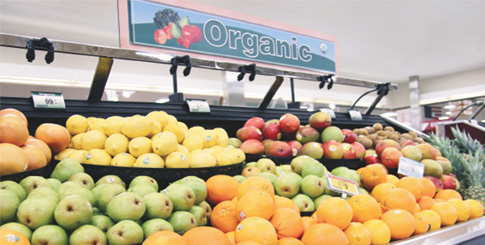Bioponic Operations
Along this line, soilless hydroponics, aeroponics, and aquaponics are also eligible for organic certification. Opponents of such ‘bioponics’ claim soil-plant ecology is intrinsic to organic growing systems and point to a lack of detailed standards for water-based systems. A task force was created by the National Organic Standards Board to explore the issue.
Lejeune believes in transparency and thinks hydroponics should be clearly labeled, “so consumers can make the choice.”
Munger agrees “it would be nice to have clarity,” but adds, “it is very difficult to grow certain crops year-round.”
While 4Earth does not operate its own greenhouse, the company has relationships with growers that do. He says hot houses subscribe to all of the philosophies of organic growing and notes that a consistent year-round supply of organics—regardless of the environment—makes suppliers more competitive in the market.
Final Thoughts
The growing demand for fresh organic produce is more than a passing fad. Organic produce is a supermarket staple and can also be found at restaurants across the country. Double-digit sales growth shows no signs of slowing down for the rest of the year.
For those who grow and ship these items, there are plenty of obstacles—both manmade and from nature—to get organic fruits and vegetables into the hands of consumers. Weather events, pests, and labor are but a few of the challenges growers face, along with the rigors of certification and food safety requirements.
Although maintaining safety and certification standards isn’t easy, these measures provide a stamp of approval consumers can trust to get what they pay for. And trust in the product is what certification is all about.
Image: Annette Shaff/Shutterstock.com



